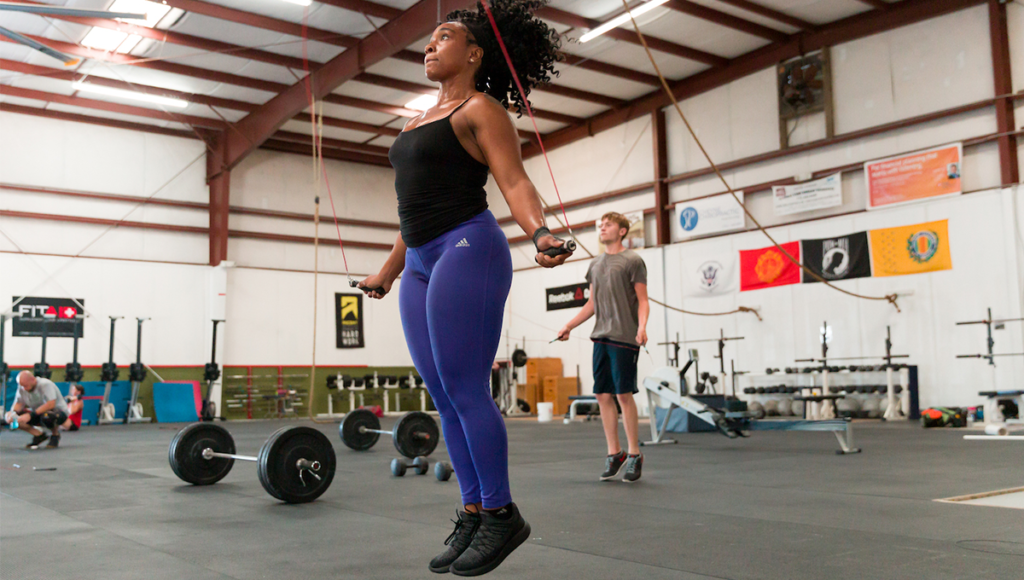Do you know how to train your cardiovascular fitness? If you think you need to run a half marathon every time, you are wrong. If you think you need to go all out sprinting hills, you are also wrong. Here is what you should be doing for better health.
When it comes to elevating your cardiorespiratory fitness, the approach is less about extremities and more about finding a harmonious balance. Imagine your training regime as a triangle, where your goal isn’t just to extend the base or peak but to maximise the entire area. This analogy perfectly encapsulates the essence of effective cardiovascular training – it’s not merely about the intensity or duration but the overall equilibrium.
The base of this metaphorical triangle represents your Zone 2 training, the foundational endurance efforts that form the bedrock of cardiovascular fitness. On the other hand, the peak symbolises your VO2 max, the pinnacle of your exertion where your body is pushed to its limits. Striking the right balance between these two – expanding the base without neglecting the peak – is the key to unlocking a higher level of fitness.
The information you are going to see about how to train your cardiovascular fitness is the result of a conversation with Peter Attia he shared on his YouTube channel.
Peter Attia is a prominent figure in longevity, health optimization, and medicine. Through his medical practice and involvement in research initiatives, Attia focuses on extending lifespan and improving quality of life. A thought leader in health and wellness, he communicates complex medical concepts effectively, emphasizing the significance of nutrition, exercise, and lifestyle choices in optimizing health and longevity.
Related: How Running Once a Week Changes Your Body
How to Train Your Cardiovascular Fitness
A compelling rule of thumb that emerges in the realm of fitness is the 80/20 principle. This guideline suggests that about 80% of your training should focus on the low-intensity, endurance-building Zone 2 workouts, while the remaining 20% should target the high-intensity, peak-performance VO2 max efforts. Intriguingly, this ratio holds true across the spectrum of athleticism, from casual fitness enthusiasts to the world’s elite competitors.
For instance, Tadej Pogačar, a renowned figure in the cycling world and a two-time Tour de France champion, adheres to this principle, dedicating 80 to 90% of his training to Zone 2 efforts. This approach is a testament to the universal applicability of the 80/20 rule, underlining that the essence of effective training lies in the balance, not just the extremities of effort.
5 Reasons Why THIS is the Best Exercise for Increasing Lifespan and Fat Loss
 Source: Courtesy of CrossFit Inc.
Source: Courtesy of CrossFit Inc.Structuring Your Training Pyramid
Understanding the training pyramid is crucial to implementing this balanced approach effectively. It starts with determining the amount of time you’re willing to commit to your fitness goals. From there, you can allocate 80% of that time to Zone 2 training and 20% to VO2 max efforts.
For example, if you have five hours per week to dedicate to cardio, four of those should be in Zone 2, with the remaining hour focused on VO2 max. This distribution not only optimises your fitness gains but also ensures a sustainable and enjoyable training routine.
Zone 2 Training: The Foundation of Your Fitness
Zone 2 training is about maintaining a steady, moderate effort, where you’re working just enough to enhance endurance without overtaxing your body. This level of exertion optimises fat burning and boosts mitochondrial efficiency, key components of improved fitness. Activities like cycling, running, swimming, or even brisk walking can effectively maintain this zone, provided they’re done consistently and at the right intensity.
How to Do Zone 2 Cardio (And Why You Should Do It)
 Source: Gabin Vallet
Source: Gabin ValletVO2 Max Training: Pushing the Boundaries
In contrast, VO2 max training is about short bursts of near-maximal effort, pushing your body to adapt to higher levels of exertion. This training enhances your cardiovascular system’s capacity to handle intense activities, improving your overall performance and endurance. Whether it’s hill sprints, interval running, or high-intensity cycling, the focus is on pushing your limits, albeit for a shorter duration.
Related: High-Intensity Interval Training: HIIT Benefits, Risks, Workouts
Incorporating a balanced approach to your cardiorespiratory training by adhering to the 80/20 rule can lead to significant improvements in your fitness levels. By dedicating the majority of your training to Zone 2 and complementing it with targeted VO2 max efforts, you create a comprehensive regime that enhances endurance, efficiency, and performance. Remember, the key to effective training is not just in the effort exerted but in the strategic balance of intensity and endurance. Whether you’re a casual fitness enthusiast or an aspiring elite athlete, this balanced approach can pave the way to achieving your fitness goals and enhancing your overall health and well-being.
Watch the video below for more information, and a deeper analysis, on how to train your cardiovascular fitness according to Peter Attia.
From Training to Failure to Eating Clean: Explaining Controversial Fitness Topics
Training your cardiovascular fitness is crucial for various reasons, impacting both your physical health and overall well-being. Here’s an in-depth look at why it’s so important:
- Heart Health: Cardiovascular fitness enhances the efficiency of your heart. A stronger heart pumps more blood per beat, reducing the effort needed to pump blood throughout your body. This efficiency can lower your resting heart rate and blood pressure, which are indicators of your heart health and overall fitness.
- Improved Circulation and Oxygen Utilisation: Regular cardiovascular exercise boosts the circulation of blood in your body and improves the ability of your muscles to utilise oxygen. Enhanced circulation means better delivery of nutrients and oxygen to various parts of your body, which is vital for the health of your tissues and organs.
- Metabolic Enhancements: Engaging in regular cardiovascular activities can increase your metabolism, aiding in weight management and reducing the risk of obesity and related conditions like type 2 diabetes. It helps in the regulation of blood sugar levels, enhancing your body’s ability to use insulin.
- Enhanced Respiratory Function: Cardiovascular fitness is closely tied to respiratory efficiency. With regular training, your lungs become better at oxygenating blood and eliminating carbon dioxide, which can improve your endurance and performance in physical activities.
- Mental Health Benefits: Exercise, including cardiovascular fitness activities, is known to release endorphins, which are chemicals in the brain that act as natural painkillers and mood elevators. Regular cardiovascular exercise can reduce stress, anxiety, and depression, promoting an overall sense of well-being.
- Improved Immune Function: Regular, moderate cardiovascular exercise is associated with a stronger immune system. It can help flush bacteria out of the lungs and airways, increase circulation of white blood cells, and cause changes in antibodies and white blood cells that make the immune system more vigilant.
- Longevity and Quality of Life: There’s a strong link between cardiovascular fitness and lifespan. Improved cardiovascular health is associated with a reduced risk of chronic diseases, contributing to a longer and healthier life. Moreover, better cardiovascular fitness is correlated with improved mobility and independence, especially as you age.
- Psychological and Cognitive Benefits: Cardiovascular fitness can also impact your brain health. It’s linked to reduced risk of cognitive decline and can improve brain function related to memory, attention, and decision-making processes.
- Social and Recreational Benefits: Many forms of cardiovascular exercise, like team sports, running clubs, or group fitness classes, provide opportunities for social interaction and enjoyment, further enhancing mental health.
In summary, cardiovascular fitness is a cornerstone of physical and mental health, influencing various aspects of your life from your heart function to your mood and cognitive abilities. Regular cardiovascular exercise is a powerful tool for maintaining and improving overall health and quality of life.
Source link: https://www.boxrox.com/how-to-train-your-cardiovascular-fitness/ by Robert Born at www.boxrox.com






